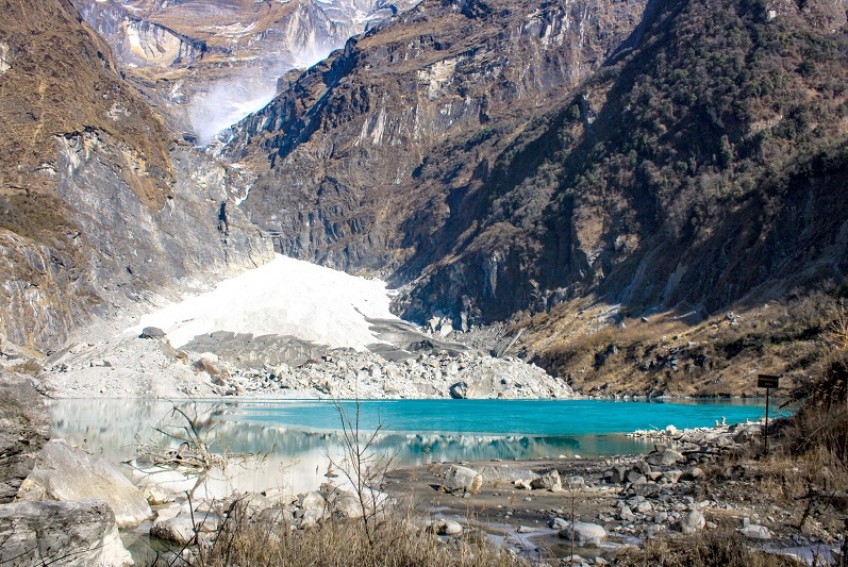Despite previous efforts to mitigate risks, the Tsho Rolpa glacial lake in Nepal continues to expand, posing an imminent danger to 6,000 households.

Kinjum Sherpa, a resident of the high Himalayan village of Naa in northeast Nepal, tends to her yaks while her children work as climbing guides on peaks like Mount Everest. Unbeknownst to her, a looming disaster threatens her home. Just four kilometers upstream, the Tsho Rolpa glacial lake, situated at 4,545 meters above sea level, is rapidly expanding. Classified as “critically dangerous,” a potential glacial lake outburst flood (GLOF) could devastate downstream villages like Naa and Beding, impacting vital infrastructure.
When asked about the risk, 72-year-old Sherpa responded, “I don’t know what should be done to prevent that. Maybe people in the higher-up know that.”
Despite mitigation efforts in the past, the danger has resurfaced. Funded by the Netherlands, the Nepali government, and international partners, a project completed in June 2000 lowered the lake’s water level by three meters through a canal system. However, additional work to further reduce the level by 15-17 meters was halted due to funding issues.
Nearly 25 years later, a survey by Nepal’s Department of Hydrology and Meteorology shows the lake’s area grew from 1.55 square kilometers in 2008 to 1.65 square kilometers in 2022, although its maximum depth decreased slightly from 136.5 meters to 125.6 meters.
The Himalayan region is experiencing temperature increases above the global average. A 2019 field expedition by the International Centre for Integrated Mountain Development (ICIMOD) noted the lake is fed by the retreating Tarkading Glacier, which has been shrinking by 60 meters annually since 2009. Additionally, 2023 saw record-high temperatures in Nepal.
“The concern regarding possible flooding from Tsho Rolpa and impacts downstream remains high, particularly with rapid warming,” said Arun Bhakta Shrestha, ICIMOD’s senior climate change specialist. “The lake [water level] lowering in 1999-2000 by three meters has not completely averted the risk. The recommendation was to lower it by 20 meters to make the lake completely risk-free.”
Other glacial lakes, like Tsho Nakpu, are also expanding, raising risks for downstream communities, noted Pemba Sherpa, a mountaineer and one of Kinjum’s 11 children.
There have been 24 GLOFs recorded in Nepal over 450 years, with 16 occurring in the past 60 years. To mitigate risks, Shrestha emphasizes the need for regular inspections and real-time monitoring using digital cameras linked to telemetry systems. He also stresses the importance of raising awareness among downstream communities.
Senior divisional hydrologist Dinkar Kayastha of the Department of Hydrology and Meteorology said the government is seeking $36.1 million from the Green Climate Fund to lower water levels in the four highest-risk glacial lakes: Thulagi in the Gandaki Basin, and Lower Barun, Lumding, and Hongu in the Koshi Basin. The government also aims to upgrade weather-monitoring stations and early warning systems, though funding remains uncertain.
Local communities, represented by leaders like Nima Geli Sherpa, chairperson of Gaurishankar rural municipality, and Devika Thami, deputy chair of Bigu rural municipality, are calling for more proactive government action. They emphasize the need for better preparedness and mobilization of local resources. As per the Dialogue Earth News, someone like lodge owner Nima Jangmu Sherpa, place their faith in religious beliefs, hoping divine protection will prevent disaster.
As the risk grows, the need for comprehensive and sustained efforts to mitigate the dangers posed by Tsho Rolpa and other glacial lakes becomes increasingly urgent.














